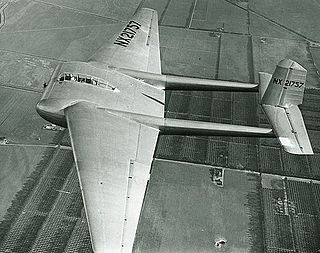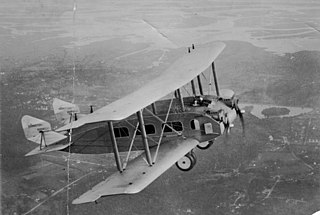
The fuselage is an aircraft's main body section. It holds crew, passengers, or cargo. In single-engine aircraft, it will usually contain an engine as well, although in some amphibious aircraft the single engine is mounted on a pylon attached to the fuselage, which in turn is used as a floating hull. The fuselage also serves to position the control and stabilization surfaces in specific relationships to lifting surfaces, which is required for aircraft stability and maneuverability.

The Junkers G.38 was a large German four-engined transport aircraft which first flew in 1929. Two examples were constructed in Germany. Both aircraft flew as a commercial transport within Europe in the years leading up to World War II.

The XCG-16 was a military transport/assault glider ordered by the United States Army Air Forces (USAAF), from General Airborne Transport Co., for competition against the Waco CG-13A at Wright Field.

Vincent Justus Burnelli was an American aeronautics engineer, instrumental in furthering the lifting body and flying wing concept.

The Burnelli CBY-3 Loadmaster is an unconventional transport aircraft that was designed by American engineer Vincent Burnelli and built in Canada in 1944 by Canadian Car and Foundry.

The Burnelli UB-14, also known as the Cunliffe-Owen Clyde Clipper, was a 1930s American prototype lifting-fuselage airliner designed and built by Vincent Burnelli.

The PWS-20 was a Polish single-engine high-wing 8 passenger airliner, built in the PWS factory and when it made its first flight in 1929 it became the first Polish-designed transport aircraft to fly.

The PWS-54 was a Polish single-engine passenger and mail plane for three passengers; one alone was built in 1932 in the PWS factory.

The PZL.4 was a Polish three-engine passenger aircraft for 10 passengers, built in PZL factory in 1932, which remained a prototype. It was the first Polish-designed and produced multi-engine plane.

The Gloster TC.33 was a large four-engined biplane designed for troop carrying and medical evacuation in the early 1930s. Only one was built.
The Fairey Fremantle was a large single-engine biplane seaplane designed in the mid-1920s for a proposed around-the-world flight. Only one was built.

The Latécoère 350 was a trimotor development of the Latécoère 28, a successful single-engined French monoplane of around 1930. The three engines were intended to provide the reliability needed for overnight flights, but the 350 came out very overweight. Only one was built.
The Latécoère 440 was a single-engined, high-winged float plane built as a coastal defence aircraft for the French Navy in the early 1930s. Two were produced to contract but did not impress in tests and the Navy chose instead the Latécoère 290.

The Dyle et Bacalan DB-70 was a large three engine French airliner with a thick airfoil centre section which accommodated the passengers. Two fuselages, part of the centre section at the front but distinct further aft, carried the empennage. First flown in 1929, only one was built.

The Dyle et Bacalan DB-10 was a heavy night bomber, designed in France and flown in 1926. It was a twin engine, high wing, metal frame monoplane, distinguished by a very thick centre section wing which formed the forward fuselage and housed the engines.

The SAB AB-20 was a large four engine twin boom French bomber built in the early 1930s as a development of the Dyle et Bacalan DB-70 airliner. It featured a lifting body of thick airfoil section between the inner engines. It was later modified for the attack role; a second aircraft, the AB-21, had different engines and cleaner aerodynamics but no more were built.

The Burnelli CB-16, also known as the Uppercu-Burnelli CB-300, was a passenger aircraft designed by the American company Burnelli in 1928. It was the first twin-engined aircraft to have retractable landing gear. Only one was built.

The Burnelli GX-3, also known as Uppercu-Burnelli UB-SS. was an American twin-engined, mid-wing experimental aircraft which first flew in 1929. Work commenced on this aircraft during development of the Burnelli CB-16. Soon after, Daniel Guggenheim announced the Guggenheim Safe Aircraft Competition. Many manufacturers brought aircraft to this competition. The GX-3 was built in New Jersey, but did not arrive at the competition in time to participate. However, it was reported to have good short take-off and landing capabilities and was able to operate at 200 km/h. The GX-3 had wings which were able to change their shape using flaps. The front wheels were smaller than the rear ones, and the aircraft was powered by two 90 hp (67 kW) engines. The pilots sat in an open cockpit. The aircraft also incorporated Burnelli's lifting-body feature.

The Burnelli RB-1 was a US twin engine biplane airliner prototype from 1920, incorporating a lifting body fuselage.

The Wibault 2, Wib 2 or Wib 2 BN.2 was a single engine biplane aircraft designed and built in France in the early 1920s. It was intended as a heavy night bomber, though a thirteen-seat passenger version was proposed. Only one was built.


















